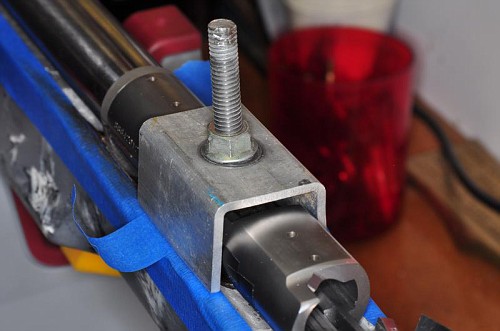Boyd Allen
Active member
I ran across this article, and I thought that I would share it.
http://www.shootingtimes.com/gunsmithing/simple_action_bedding_secret_020911/index.html
The one thing that I might be tempted to do is to figure out a way so that the pads would be easier to remove. Suggestions? (I was thinking that casting the pads over some sort of tape, in the barrel channel, might do the trick.)
I think that for stocks that are designed to be shot from a rest, that paying less attention to evenness the gaps on either side of the barrel, and more to the alignment of the barreled action with the CL of the bag tracking surfaces is an important consideration from an accuracy point of view. Having a way to maintain a particular alignment, while bedding the action, is a common issue. I often read of wrapping tape around the barrel, to fit the channel, and center the barrel in it, but I am not convinced that this will always produce the desired alignment for certain applications where someone is trying to make best of an imperfect stock.
In any case, it would seem that using this technique would allow one to pretty much float the entire action in a thick layer of bedding compound, while maintaining a stress free situation, and whatever alignment is desired.
http://www.shootingtimes.com/gunsmithing/simple_action_bedding_secret_020911/index.html
The one thing that I might be tempted to do is to figure out a way so that the pads would be easier to remove. Suggestions? (I was thinking that casting the pads over some sort of tape, in the barrel channel, might do the trick.)
I think that for stocks that are designed to be shot from a rest, that paying less attention to evenness the gaps on either side of the barrel, and more to the alignment of the barreled action with the CL of the bag tracking surfaces is an important consideration from an accuracy point of view. Having a way to maintain a particular alignment, while bedding the action, is a common issue. I often read of wrapping tape around the barrel, to fit the channel, and center the barrel in it, but I am not convinced that this will always produce the desired alignment for certain applications where someone is trying to make best of an imperfect stock.
In any case, it would seem that using this technique would allow one to pretty much float the entire action in a thick layer of bedding compound, while maintaining a stress free situation, and whatever alignment is desired.
Last edited:









